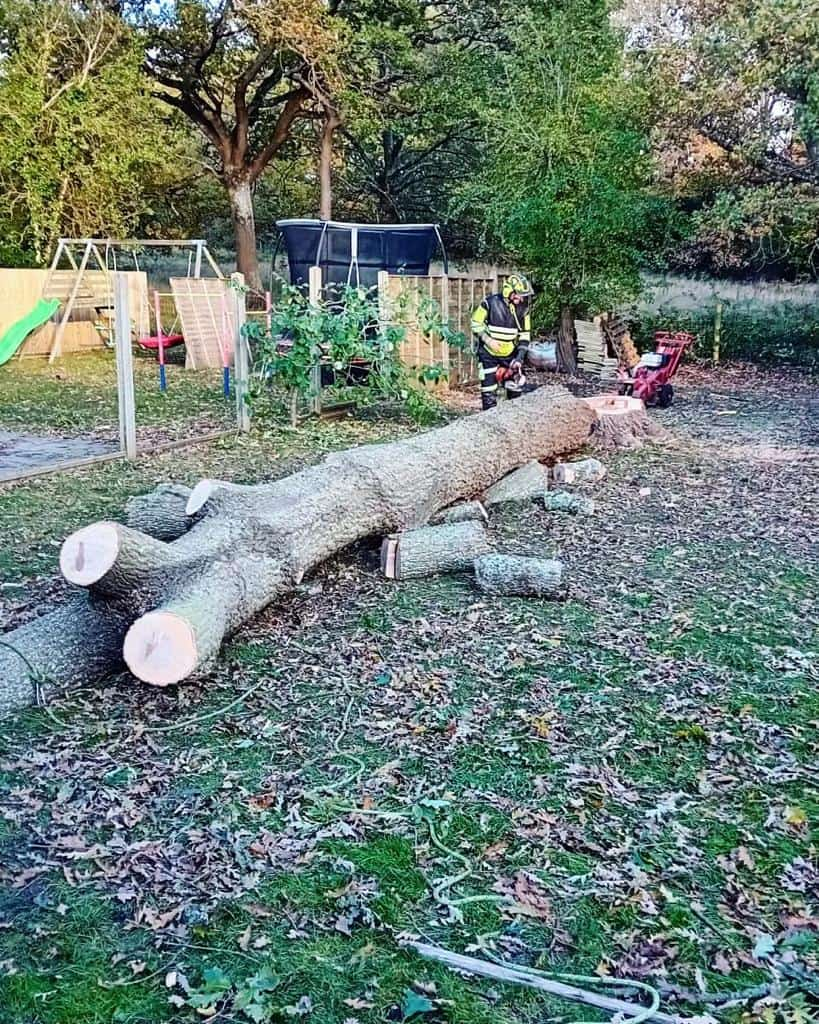Crown reduction is a common practice in tree surgery that involves reducing the size of a tree’s canopy, usually to prevent the tree from becoming too large for its environment, or to reduce the risk of damage during storms. However, while crown reduction can be beneficial for both the tree and the surrounding property, it’s crucial to perform this procedure correctly to ensure the tree’s long-term health is not compromised. For homeowners and property managers in Hoddesdon, Hertfordshire, understanding the correct approach to crown reduction is key to maintaining a healthy tree that continues to thrive for years.
What is Crown Reduction?
Crown reduction refers to the process of reducing the size of a tree’s crown, or canopy, by cutting back branches to a manageable size. Unlike topping, which involves cutting back the main leader of the tree, crown reduction is done in a way that preserves the natural shape of the tree while reducing its height and spread. It is often performed to reduce risk from falling branches, improve sunlight penetration, or allow for more space for surrounding structures and plants.
The Risks of Improper Crown Reduction
While crown reduction is generally beneficial, improper techniques can lead to a number of health issues for the tree. These include:
- Stress and Vulnerability: Incorrect crown reduction can place excessive stress on a tree, making it more susceptible to disease and pests.
- Weak New Growth: If too much of the crown is removed, the tree may produce weak regrowth that is more prone to breaking or becoming diseased.
- Decay: Over-pruning or cutting into the wrong areas can expose the tree to decay, which can lead to long-term damage and even the death of the tree.
- Imbalanced Growth: Improper cutting can result in uneven growth, leaving certain parts of the tree vulnerable to wind and other environmental factors.
How to Ensure Crown Reduction is Done Safely
1. Consult with a Certified Tree Surgeon
To avoid any potential harm to your tree, always consult with a professional tree surgeon who is experienced in crown reduction. An expert will assess your tree’s specific needs and determine the most appropriate method for reducing its size without compromising its health. At Hoddesdon Tree Surgeons, our team is fully trained in the latest tree surgery techniques and can ensure that crown reduction is performed correctly.
2. Understand the Tree’s Specific Needs
Every tree is different, and crown reduction should be tailored to each individual tree. Factors such as the species, age, and condition of the tree all play a role in how the reduction should be performed. For example, some species can tolerate more aggressive pruning, while others may be more sensitive and require gentler treatment. By understanding the specific needs of the tree, you can ensure that the procedure is carried out safely and effectively.
3. Avoid Removing More Than 25% of the Canopy
A general rule of thumb when performing crown reduction is to avoid removing more than 25% of the tree’s canopy in one go. Removing too much foliage at once can cause undue stress to the tree and result in long-term health problems. A professional tree surgeon will ensure that the reduction is gradual, with minimal impact on the tree’s overall health.
4. Ensure Proper Technique
The technique used in crown reduction is just as important as the amount of foliage removed. It’s essential that cuts are made at the right points, typically just above lateral branches or buds, to encourage healthy regrowth. A professional tree surgeon will also use the proper equipment, such as sharp pruning tools, to ensure clean cuts that are less likely to cause injury to the tree.
5. Time the Procedure Correctly
The timing of crown reduction is critical to the health of the tree. The best time for crown reduction is typically during the dormant season, usually in late autumn or early spring, as this allows the tree to recover more effectively. Avoid performing crown reduction during the growing season, as the tree may not be able to heal quickly enough, leading to unnecessary stress and potential disease entry points.
Conclusion
Crown reduction, when performed correctly, can be a highly effective way to maintain the health of your tree and protect your property. However, it is crucial to follow the proper techniques and consult with a professional tree surgeon to ensure that the procedure does not harm the tree. By taking the time to understand the needs of your tree and working with an experienced professional, you can ensure that the crown reduction process is beneficial for both the tree and its surrounding environment.
If you’re in Hoddesdon, Hertfordshire, and are considering crown reduction for your tree, contact Hoddesdon Tree Surgeons today. Our certified and experienced team will ensure that the procedure is carried out safely, promoting the health and longevity of your tree while addressing your specific needs. Let us help you maintain a beautiful, safe, and healthy landscape.
Call us on: 01992 932 599
Click here to find out more about Hoddesdon Tree Surgeons
Click here to complete our contact form and see how we can help with your tree care needs.

